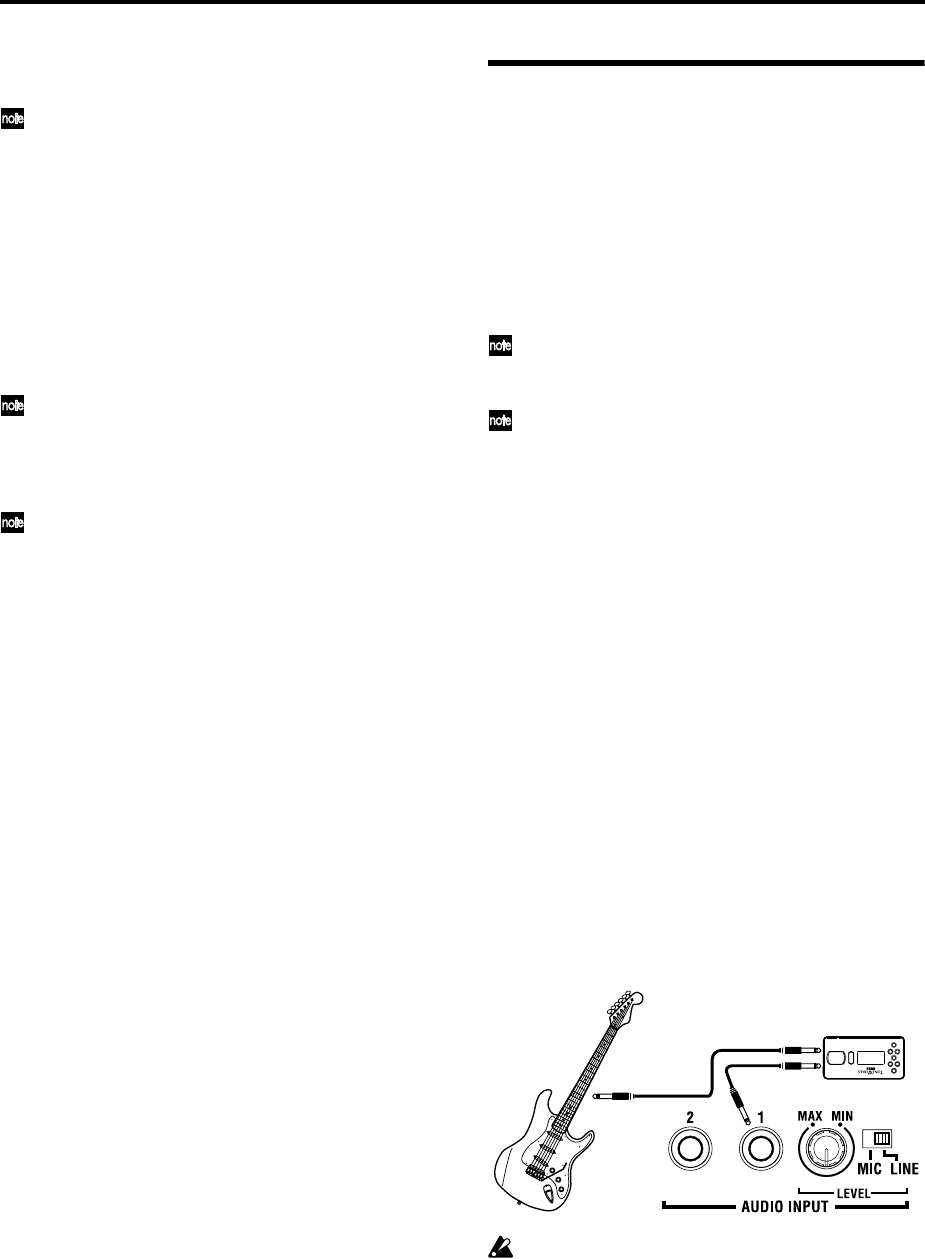
46
3 Press the SAMPLING [START/STOP] key to stop
recording.
Sampling will end automatically when the specified
“Sample Time” is reached.
6. Listen to the sample and edit it
1 Press the Perf. Edit tab to select the P0: Play, Perfor-
mance Edit page, and select the program into which
the newly-recorded sample was converted.
INT-E: 101 was selected in the example shown here, so
press the [INT-E] key, then numeric keys [1], [0], and
the [1] key.
2 Play the C3 note on the keyboard to hear the sound
that was resampled.
REALTIME CONTROLS knobs 1–4, the Performance
Editor, and the various parameters in P1: Edit-Basic–
P9: Edit-Master Effect can be used to edit the program
for the sound you resampled, for example by adjust-
ing the filter, EG, or effects. (☞p.34, 67)
If you want to adjust the loop point or other settings
of the sample, edit these parameters in Sampling
mode. (☞p.43)
Sample an arpeggiated drum
phrase together with an exter-
nally-input guitar
Here’s how you can resample an arpeggiated perfor-
mance together with an external audio input source.
In this example, we will explain how a guitar connected to
the AUDIO INPUT jack can be played along to a drum
pattern played by the TRITON STUDIO, and how both
can be sampled together.
Sampling can be performed in a similar way in Com-
bination and Sequencer modes as well as in Program
mode.
The procedure given here assumes that you are start-
ing from the default state immediately after power-
on.
1. Select the program that you want to sam-
ple
1 Press the [PROG] key to enter Program mode, and
select the INT-B020: Processed Kit program.
2 Turn on the arpeggiator (ARPEGGIATOR [ON/OFF]
key LED is lit), and play the keyboard to make sure
that a drum phrase is sounded.
Press the Arpeggio tab, and make sure that “Latch” is
checked.
Also adjust the arpeggiator tempo “” as desired.
3 Press the ARPEGGIATOR [ON/OFF] key to turn off
the arpeggiator.
2. Connect your guitar and make input set-
tings
1 Connect your guitar to the rear panel AUDIO INPUT
1 jack.
Set the AUDIO INPUT [MIC/LINE] switch to the LINE
position, and set the [LEVEL] knob to approximately
the center position.
If you are using a guitar with passive pickups (i.e.,
without an internal pre-amp), the mismatch of
impedance levels will make it difficult to sample at an
appropriate level. You should route the signal from
the guitar through a pre-amp or effect unit.
Guitar





















